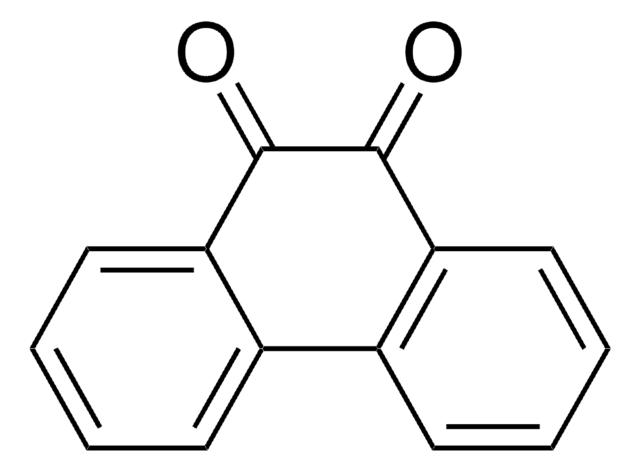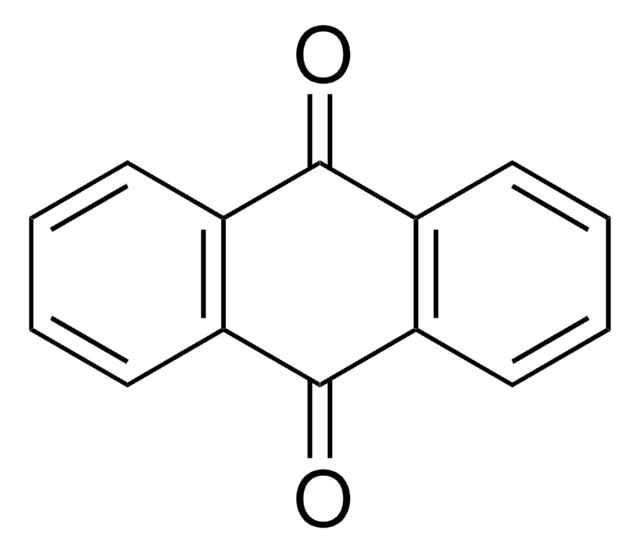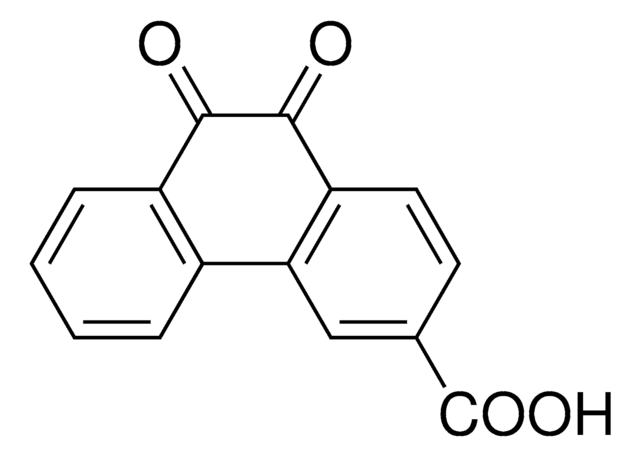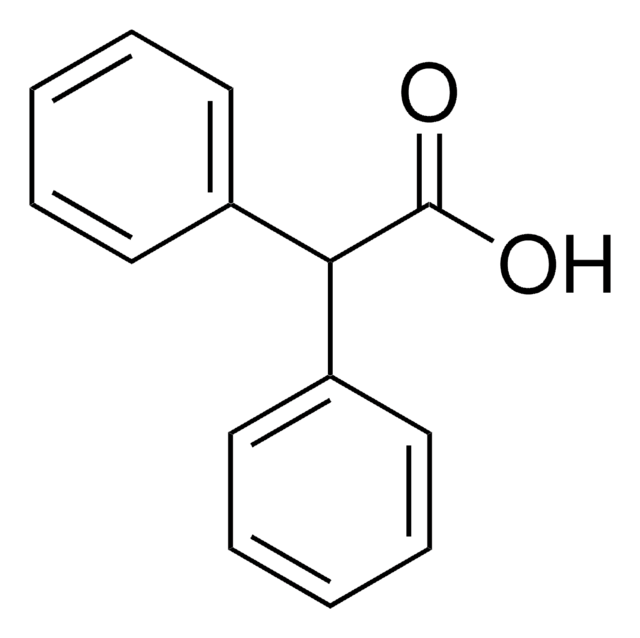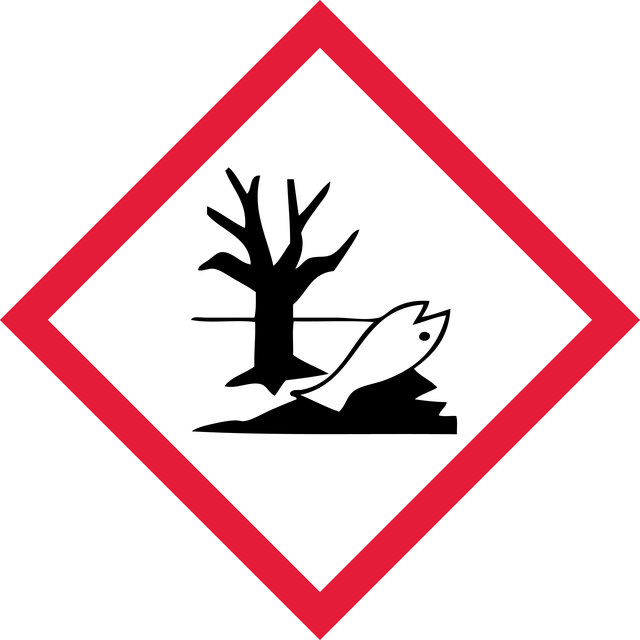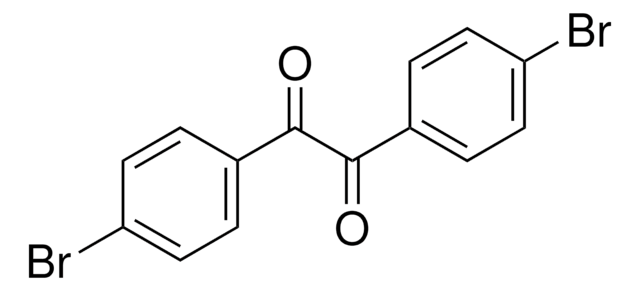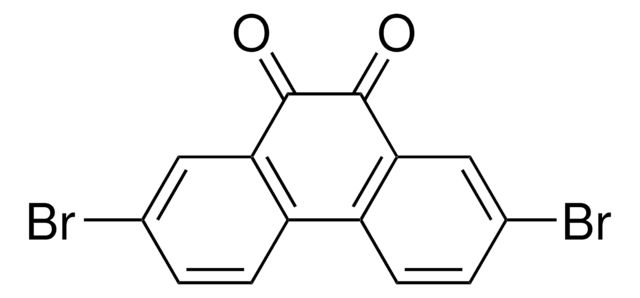275034
9,10-Phenanthrenequinone
95%
Synonym(s):
9,10-Phenanthrenedione
About This Item
Recommended Products
Quality Level
assay
95%
form
powder
mp
209-212 °C (lit.)
SMILES string
O=C1C(=O)c2ccccc2-c3ccccc13
InChI
1S/C14H8O2/c15-13-11-7-3-1-5-9(11)10-6-2-4-8-12(10)14(13)16/h1-8H
InChI key
YYVYAPXYZVYDHN-UHFFFAOYSA-N
Gene Information
human ... PTPN1(5770), PTPRC(5788)
Looking for similar products? Visit Product Comparison Guide
Related Categories
1 of 4
This Item | 156507 | 8.07564 | 8.20529 |
|---|---|---|---|
| assay 95% | assay ≥99% | assay ≥99.0% (HPLC) | assay ≥98.0% (HPLC) |
| form powder | form - | form powder | form powder |
| mp 209-212 °C (lit.) | mp 209-212 °C (lit.) | mp 203-206 °C | mp 247-252 °C |
| Quality Level 100 | Quality Level 100 | Quality Level 200 | Quality Level 200 |
| Gene Information human ... PTPN1(5770), PTPRC(5788) | Gene Information human ... PTPN1(5770), PTPRC(5788) | Gene Information - | Gene Information - |
General description
signalword
Warning
hcodes
Hazard Classifications
Aquatic Acute 1 - Eye Irrit. 2
Storage Class
11 - Combustible Solids
wgk_germany
WGK 3
flash_point_f
473.0 °F
flash_point_c
245 °C
ppe
dust mask type N95 (US), Eyeshields, Gloves
Choose from one of the most recent versions:
Already Own This Product?
Find documentation for the products that you have recently purchased in the Document Library.
Customers Also Viewed
Our team of scientists has experience in all areas of research including Life Science, Material Science, Chemical Synthesis, Chromatography, Analytical and many others.
Contact Technical Service
